December 2018
Click here to access this newsletter as a SIMPLE TEXT document.
Please remember the Essential Vermeer when you change your email address!
IN BRIEF :
mult-imedia:
1.
Silenzi di Vermeer: a four part TV series on Vermeer by Tomaso Montanari
scholarly publication:
2. Vermeer's Mistress and Maid: a publication by James Ivory and Margaret Iacono
Essential Vermeer website addition:
3. Vermeer and Perspective: a two part study by Jonathan Janson
on the net:
4. Meet Vemeer: new website feature on Google's Art Project
exhibitions:
5. Vermeer paintings visit Tokyo and Osaka
in the news:
6. Criminal boss murdered: will we ever recover Vermeer's stolen Concert?
New four-part Vermeer TV series
I Silenzi di Vermeer (The Silences of Vermeer), in four episodes
author: Tomaso Montanari
director: Luca Criscenti
director of photography: Francesco Lo Gullo
editor: Emanuele Redondi and Anjan Di Leonardo
music: Giorgio Giampà
language: Italian
produced by: Land Comunicazioni
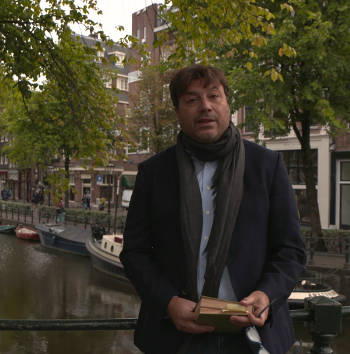
On December 21 (9:15 P.M), Rai5, the Italian public cultural TV channel, will broadcast the first of its four-episode series, I Silenzi di Vermeer (Vermeer's Silences),
The series' author, the Italian art historian, academic and newspaper columnist Tomaso Montanari, is well known to the Italian public for his brilliant multi-episode TV series on Caravaggio and Bernini (see information below).
Guided along voyages throughout America and Europe to rediscover Vermeer and his surviving 36 canvases, the spectator is awarded a number of surprisingly fresh insights into the artist's seemingly faceless art by means of an exacting but intuitive reading of the thematic content and composition of each work, while simultaneously fleshing out the circumstances in which the artist lived and painted. To enrich the viewer's parallel voyage, the narrative is peppered with lesser-known but evocative experiences of the collectors, art historians, writers and painters who, like Montanari himself, have endeavored to sound the silent depths of Vermeer's art.
I Silenzi di Vermeer confirms Montanari's aptitude as a narrator as well as his commitment to divulging the works of the great artists of the past. Drawing force from an unmediated participation and complete command of historical material, he is able to arouse intellectual inquiry and transmit the essential poetry of a work of art even to the neophyte, in effect, transporting him back in time to the moment of its creation. Perhaps the only shortcoming of the series, at least for the moment, is that it is accessible only to those familiar with Italian.
broadcasting schedule:
December 21, 2018 | La poesia di ogni giorno (The Poetry of Everday Life)
December 28, 2018 | Il dentro e il fuori (The Inside and the Outside)
January 4, 2019 | Cartografia d’amore (The Cartography of Love)
January 11, 2019 | Con altri sensi (With Other Senses)
All four episodes will be accessible online at a date to be announced.
Highly recommended are Montanri's:
- La Vera Natura di Carvaggio (The True Nature of Caravaggio; 12 episodes; Land Comunicazioni)
accessible at: https://www.raiplay.it/programmi/laveranaturadicaravaggio/ - La Liberta' di Bernini (The Freedom of Bernini; 8 episodes; Land Comunicazioni)
accessible at: http://www.landcomunicazioni.it/it/sul-sito-della-rai-la-sesta-puntata-de-la-liberta-di-bernini/
2.
A new scholarly publication on Vermeer's Mistress and Maid
Vermeer's Mistress and Maid (Frick Diptych)
by James Ivory and Margaret Iacono
Hardcover, 64 pages, London (D. Giles ltd.)
2018
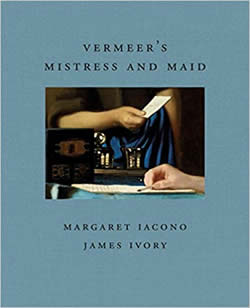
This slim but richly illustrated publication is the second volume in the Frick Diptych Series, which pairs an essay by Margaret Iacono, the Frick’s Associate Research Curator, with a literary piece by Academy Award-winning film director, producer and screenwriter James Ivory.
Particularity fascinating for Vermeer devotees is Iacono's 36-page essay, which examines the picture from its inception to the complicated financial transactions which brought the Maid and Mistress—the third and last Vermeer—into the collection of the New York magnate Henry Clay Frick, who assembled one of the finest private art collections in the world. While the painting's authorship has rarely been questioned, its oversized figures, dark background and anomalous execution have been a source of constant debate. Iacono conducts an in-depth analysis of the work's thematic contents and composition, weighs the various interpretive alternatives, and succeeds in providing the most insightful “picture” of this luxurious but enigmatic canvas as yet proposed. Also discussed are the results of a recent technical examination of the picture performed by the Metropolitan Museum of Art conservation department. While still provisional—a full report is forthcoming—exciting new evidence helps intuit the work's compositional iter as well as the lacunae of its present condition, prompting the viewer to gaze deeper into the artist's intentions and the picture-making process. Included is a revised provenance.
Margaret Iacono is associate research curator at The Frick Collection. Her areas of interest include northern European painting of the fifteenth to seventeenth centuries and the history of collecting. Most recently she organized Vermeer, Rembrandt and Hals: Masterpieces of Dutch Painting from the Mauritshuis (2014), and also served as the Frick coordinator for The Frick Collection: Art Treasures in New York, held at the Mauritshuis, The Hague (2015).
James Ivory is an American film director, producer and screenwriter. Films produced by his company Merchant Ivory Productions (producer Ismail Merchant and script writer Ruth Prawer Jhabvalar) won six Academy Awards. For his work Call Me by Your Name (2017), which he wrote and produced, Ivory won awards for Best Adapted Screenplay from the Academy Awards, British Academy of Film and Television Arts, Writers Guild of America, the Critics' Choice Awards, and the Scripter Awards, among others.
3.
Essential Vermeer website addition
Vermeer and Perspective
Jonathan Janson
http://www.essentialvermeer.com/technique/perspective/vermeer-and-perspective.html
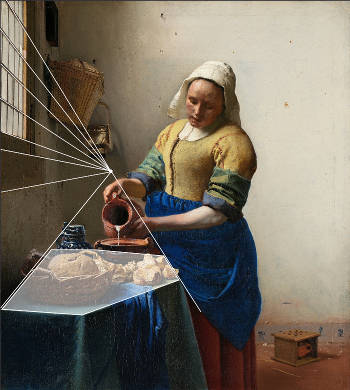 The Milkmaid
The Milkmaid (perspective diagram showing octagonal gatleg table)
Johannes Vermeer
c. 1657–1661
Oil on canvas, 45.5 x 41 cm.
Rijksmuseum, Amsterdam
Soon after Pieter Teding van Berkhout, a young scion of a landed gentry family from The Hague, made a visit to Vermeer's studio in June 1669, he wrote in his diary, "I went to see a celebrated painter named Vermeer." But Van Berkhout understood Vermeer's paintings differently than we do today. He described them not as "allegories" or "scenes of daily life," much less "masterpieces of light" or "suspended moments in time" that "exude silence." Van Berkhout wrote that the most "extraordinary and curious aspect" of Vermeer's art consists in "perspective."
This new and richly illustrated two-part study is the most comprehensive examination thus far undertaken into Vermeer and linear perspective. The first part considers how Vermeer and his contemporaries could have acquired knowledge of linear perspective needed to create the sensation of foreshortening and spatial recession in their paintings. The methods considered include geometric construction, the drawing frame, the pin-and-string method and the camera obscura. Each of these four methods is first examined in its functionality and practicality, and then weighed against correlating evidence exhibited in Vermeer's paintings.
The second part examines the perspective armature of each of his paintings, reveling their strengths, weakness and anomalies.
Also included are perspective diagrams of each painting, a list of period perspective manuals—many of which can be downloaded integrally in PDF format—a glossary of perspective terms as well as a list of writings focused on questions of Vermeer and perspective.
4.
Google's new Google Art Project addition on Vermeer
Meet Vermeer
https://artsandculture.google.com/project/vermeer
In cooperation with 18 art institutions that house paintings by Vermeer, Google has launched a new monographic website called Meet Vermeer as a part of its Google Art Project website. The new project features a ample series of videos and richly illustrated introductory essays that address various aspects Vermeer's life and artistic afterlife, including the artist's technique, defining themes and critical reception. The project also vaunts a smartphone app called Pocket Gallery. Pocket Gallery transforms an iOS- or Android-based smartphone into an ultra-high resolution exhibition that brings the complete works of Vermeer into a single Augmented Reality museum, designed specifically for the project by Google and curated by art historians.
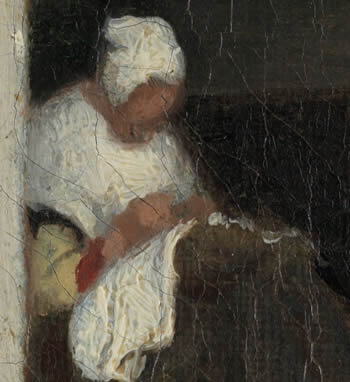 The Little Street (detail)
The Little Street (detail)Johannes Vermeer
c. 1657–1661
Oil on canvas, 54.3 x 44 cm.
Rijksmuseum, Amsterdam
For the pleasure of the more discerning art lover or savvy art scholar, the California-based technical Goliath has turned its Art Camera—designed specifically for photographing works of art—on eight canvases by Vermeer creating the highest-ever resolution image ever made. In various works (e.g., The View of Delft, Girl with a Pearl Earring or The Geographer) the level of magnification is so astounding that we can question if greater magnification is any longer necessary, outside for purely conservational needs. The remaining works were photographed by the museums and collectors themselves and vary in resolution and color quality. The best high-resolution images include: Diana and her Companions, Christ in the House of Martha and Mary, The Milkmaid, The Little Street, The Glass of Wine, Girl with a Wineglass, The View of Delft, Woman in Blue Reading a Letter, Woman with a Pearl Necklace, A Lady Writing, The Geographer, The Girl with a Pearl Earring, The Love Letter, A Lady Standing at a Virginal and A Lady Seated at a Virginal. Both the newly photographed and museum images can been zoomed online, but they cannot be downloaded.
- Meet Vermeer website:
https://artsandculture.google.com/project/vermeer - Meet Vermeer | 63 stories
https://artsandculture.google.com/search/exhibit?project=vermeer - High-resolution images can be accessed from:
https://artsandculture.google.com/search/asset?project=vermeer
or go directly to the painting which interests you most:
- Diana and her Companions
https://artsandculture.google.com/asset/-/CwHVjcoJyEyrtg?childAssetId=uAGPKfpdVrKXng - Christ in the House of Martha and Mary
https://artsandculture.google.com/asset/christ-in-the-house-of-martha-and-mary/qQFE84jjbAZMxw - The Milkmaid
https://artsandculture.google.com/asset/the-milkmaid/9AHrwZ3Av6Zhjg - Officer and Laughing Girl
https://artsandculture.google.com/asset/officer-and-laughing-girl/BAGeJEKy9TZJog - The Little Street
https://artsandculture.google.com/asset/the-little-street/YAGJRuPz8yVuRQ - The Glass of Wine
https://artsandculture.google.com/asset/the-glass-of-wine/_wGElyA8n9R8iQ - Girl with a Wineglass
https://artsandculture.google.com/asset/girl-with-a-wineglass/LgHXGzeiFPn9PQ - The View of Delft
https://artsandculture.google.com/asset/view-of-delft/CgGsQh01dnFdDQ - Woman in Blue Reading a Letter
https://artsandculture.google.com/asset/woman-reading-a-letter/QQF82wPVTRfMPw - Woman with a Pearl Necklace
https://artsandculture.google.com/asset/young-woman-with-a-pearl-necklace/kQFMVJh6zAXoxQ - Woman Holding a Balance
https://artsandculture.google.com/asset/woman-holding-a-balance/-wHFDKu7-mhjtQ - The Geographer
https://artsandculture.google.com/asset/the-geographer/xQFs38J6ShT4nA - The Girl with a Pearl Earring
https://artsandculture.google.com/asset/girl-with-a-pearl-earring/3QFHLJgXCmQm2Q - The Guitar Player
https://artsandculture.google.com/asset/the-guitar-player/TQGoRQoowsW0uQ - The Lacemaker
https://artsandculture.google.com/asset/the-lacemaker/KgFdRFKLfvwp8g - The Love Letter
https://artsandculture.google.com/asset/the-love-letter/fwEiDs-Dommm3g - A Lady Standing at a Virginal
https://artsandculture.google.com/asset/-/eAGR4D907yOWcw?childAssetId=LAHpXWgi2wozMw - A Lady Seated at a Virginal
https://artsandculture.google.com/asset/-/ZQERy3a51gsnrQ?childAssetId=OQFvovWu5HGuoQ
5.
Nine Vermeer paintings in a major Dutch art exhibition in Japan
Making the Difference: Vermeer and The Dutch Art
Ueno Royal Museum, Tokyo
October 5, 2018–February 3, 2019

Following a consolidated trend by organizers to tout the number of Vermeer paintings in their exhibitions, the Ueno Royal Museum boasts 9 out of 36 Vermeers have been brought to Japan, making it the largest showing of his work in the country. One of the exhibit's highlights is The Wine Glass, loaned from the Gemäldegalerie in Berlin, one of a handful of paintings by Vermeer that rarely travels. Other paintings from museums in Europe and the U.S. include Christ in the House of Martha and Maria, The Procuress, The Milkmaid, Woman with a Lute, A Lady Writing, Girl with a Red Hat, Woman with a Pearl Necklace and Woman Writing a Letter with her Maid.
An illustrated catalogue featuring all 49 works including the 10 Vermeer exhibited between the Tokyo and Osaka exhibitions will be available for purchase.
Each day, tickets are designated into six entry windows. After entrance visitors may remain in the exhibition for an unlimited time.
dedicated website:
https://www.vermeer.jp/
special exhibition features:
https://www.vermeer.jp/special/
the second venue will be held at Osaka :
Making the Difference: Vermeer and The Dutch Art
Museum of Fine Arts of Osaka
February 16, 2019–May 12, 2019
The exhibit will differ from the Tokyo venue and will feature not nine, but six paintings by Vermeer: Christ in the House of Martha and Mary, The Procuress, A Lady Writing, Woman with a Lute, The Love Letter and A Lady Writing a Letter with her Maid.
dedicated website:
https://vermeer.osaka.jp/
6.
Whitey Bulger Murdered in Prison
Within hours of his arrival at a federal prison in West Virginia, New England gangster James “Whitey” Bulger was beaten to death on October 30 by inmates Tuesday, marking the final, brutal chapter in the life of one of Boston’s most notorious villains.
Given Bulger’s status as Boston’s ruling crime boss and a top FBI informant his name frequently came up in connection with the theft of Vermeer's The Concert stolen from Boston’s Isabella Stewart Gardner Museum in 1990. He was often mentioned as a possible mastermind behind the theft—or at least someone who might have information about it. Hopes for the recovery of Vermeer's masterpiece rose after he and his girlfriend were was arrested by the FBI in June 2011 in a modest California home, on the basis that he might have been willing to trade information about the picture's whereabouts for a go-free pass from life imprisonment.
Unfortunately, at the moment there are no leads in the case.
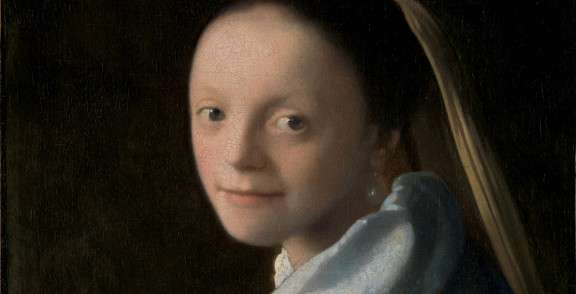



 or anything else that isn't working as it should be, I'd love to hear it! Please write me at:
or anything else that isn't working as it should be, I'd love to hear it! Please write me at: